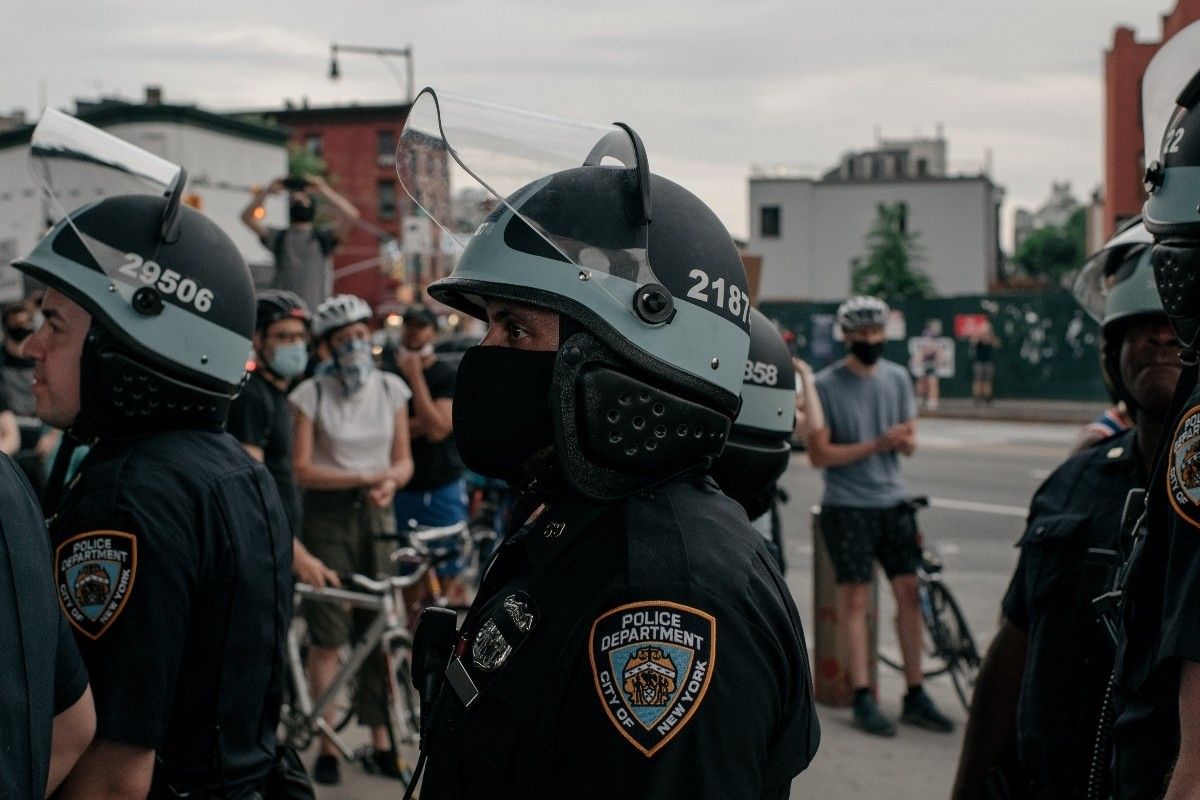
NYPD
Photo Credit: Scott Heins for Getty Images

Last year, the New York City and Brooklyn protests that followed George Floyd’s tragic death were met with pushback and violence on behalf of the police. On Wednesday, a new report by The Intercept provides a look into why.
The pushback comes directly from the New York Police Department’s Strategic Response Group or SRG. The rapid-response unit created in 2015 is made up of several hundred officers who aim to reckon with public disorder, but it appears they’ve been deployed during protests starting in 2015. The report notes that when they were formed, the former NYPD chief of department Commissioner James O’Neill declared they wouldn’t be at protests. That is the opposite of the truth.
The feature also mentions multiple incidents where police unjustifiably used force against peaceful protestors. Investigators found that officers beat protestors at least 50 times, pepper-sprayed them at least 30 times. Protestors were also struck at least 75 times.
Below we’re sharing key highlights from the expansive report.
Initially conceived by Mayor Bill de Blasio’s first NYPD commissioner, Bill Bratton, the SRG is a unit created to deal with civil disorder. First approved in 2015 as a 350-officer unit, it included teams in each borough and was incorporated as the Disorder Control Unit, or DCU. It’s important to call out here that the DCU was a major part of policing Occupy Wall Street and protests surrounding the 2004 Republican National Convention. Massive arrests and abuses are well documented.
Per NYPD documents, one core mission of the SRG is to “respond to citywide mobilizations, civil disorders and major events with highly trained personnel and specialized equipment to maintain public order.”
A year after it was founded a push to expand the NYPD’s headcount to 1,300 officers led to the SRG doubling in size. The budget then went from $13 million to $90 million. Per the report, officers were attracted to the SRG due to the promise of anti-riot gear, heavy weaponry and bicycles featuring armor-clad riders. Additionally, some of those officers already had lengthy misconduct records.
Counterterrorism is the root of the SRG, but rather than prioritizing this, since 2015, the SRG has treated peaceful protestors violently, has not intervened when far-right activists “assaulted counterprotestors,” and were a part of the fatal shooting of an unarmed man.
The “militarized mentality and tactics'' used by the SRG have been brought to the forefront during civil unrest, especially last year. In the past, the unit has engaged in “high visibility deployment” with hopes to “provide and enhance visibility.” Additionally, the SRG is given advance notice and time to prepare for protests.
Joo-Hyun Kang, director of Communities United for Police Reform shared the following on the SRG: “The SRG is a symbol of the hyper-aggressive, militarized, unaccountable police violence in New York City, but that’s not exclusive to the SRG.” She added, “We have to understand this is part of the fabric of how the NYPD has historically treated protests and has historically treated Black, Latinx, and other communities of color.”
The New York Civil Liberties Union and public defenders of the Legal Aid Society denounced the police's "indiscriminate brutalizing of peaceful protestors" as the demonstrations took place last year.
Also, in a joint lawsuit, the NYCLU and Legal Aid are seeking damages for a dozen people "who were beaten, pepper-sprayed, shoved to the ground, and arrested during several incidents last summer." In addition to this suit, lawyers are asking the police to declare that they violated protestors' First and Fourth amendments.
In one other class-action suit, attorneys are also seeking damages on behalf of a large group of plaintiffs made up of "all people arrested between May 28 and June 6."